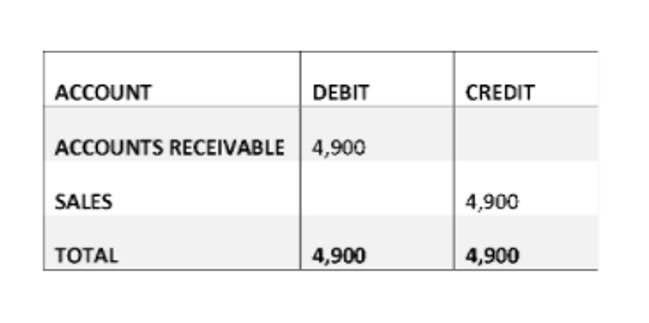Strategic shade selections can evoke specific feelings, build belief, and improve brand recall. By understanding colour psychology and the associations tied to each shade, savvy marketers can tailor their messaging to resonate with goal audiences, influencing shopper behavior. Shaping a brand’s narrative involves a thoughtful consideration of colour psychology and its transformative position. Delve into the feelings you wish to evoke, the messages you purpose to convey, and how your shade selections align together with your brand’s personality. By incorporating strategic shade strategies, a model can improve consumer engagement and place itself uniquely within the industry. Ready to raise your brand’s visual impact and strategically leverage the psychology of color in your advertising endeavors?
The Psychology Of Color In Advertising: How Hues Influence Client Habits
There is opportunity here for employers if they will reply quickly enough and make significant adjustments that provide some of the similar perks as white-collar jobs. When it comes to world advertising and branding, these considerations become much more crucial. A color scheme that works well in a single market may be ineffective and even offensive in one other. The influence of shade psychology extends far beyond the realm of marketing and branding. It has sensible applications in various features of our every day lives, from the design of our living spaces to the garments we put on. When growing product packaging, using bright or harmonious colors can decisively sway shopper selection, typically extra so than the precise high quality of the product itself.
White-collar staff are staff whose jobs entail (either largely or entirely) mental or clerical work. Now, it’s utilized to refer to staff or professionals whose work is knowledge-intensive, non-routine, and unstructured. The same color can evoke completely different responses relying on where and how it’s used. For occasion, red in a stop signal evokes a very completely different response than pink in a Valentine’s Day card.
Now, let’s paint a extra detailed image of how particular colours can have an effect on us psychologically. Keep in mind that these effects can differ depending on private experiences, cultural background, and context. One of essentially the most famous experiments on this field was performed by German psychologist Wolfgang Luscher within the 1940s.

Making Use Of Shade Psychology In Marketing

Totally Different colour combinations can set up a cohesive visual branding narrative that resonates with goal audiences. For occasion, blue is employed by 40% of Fortune 500 corporations as a outcome of its associations with trust and dependability. Notably, 85% of consumers cite shade as a major influencer of their purchasing decisions. It influences how shoppers perceive products, which might immediately impression brand identification. Understanding color psychology reveals how completely different colors elicit emotional responses, subsequently shaping shopper conduct and preferences.
Sometimes, additionally it is used to check with people who discover themselves employed in black advertising actions. The time period “white-collar worker” was coined in the Nineteen Thirties by Upton Sinclair; it’s a salaried professional, sometimes referring to basic workplace employees and management. It originates from the color of dress shirts worn by skilled and clerical staff.
- The psychology of colour in advertising is the study of how different colours can impression client behavior and influence their perception of a brand or product.
- Conversely, a whimsical shade scheme that includes shiny colors or pastels may effectively distinguish your product from categories dominated by grays, blacks, and whites.
- Different colours can evoke different responses on digital screens in comparability with print materials.
- Iconic makes use of of red by Coca-Cola and green by Starbucks illustrate effective shade use in digital marketing.
Pink: The Colour That Calls For Attention
Understanding the psychology of shade in advertising is essential for businesses to effectively talk their brand message and attract their target market. Navigating the intricate panorama of shopper behavior reveals that color is a potent influencer in shaping perceptions and steering purchasing decisions. The impression of shade on brand success is profound, as different hues evoke emotions, create memorable experiences, and foster enduring connections with shoppers. Understanding the subtleties of shade psychology empowers businesses to unlock the total potential of name identification, leaving a stable impression on their audience. General, the psychology of color in marketing is a powerful software that shouldn’t be underestimated.
There is historical past, culture, and community in blue-collar work, and they are cautious to gauge their choices before they depart. By listening to the New Collars and understanding what they need and need from an employer, corporations https://www.simple-accounting.org/ can make current blue-collar work extra viable whereas paving the method in which for a more steady workforce. We’re all familiar with the distinction between blue and white-collar work, however a new group of collar color designations has made its means into the professional sphere.

New Collars are blue-collar staff who used the pandemic to study new abilities so that they may discover higher jobs. Whereas the complete world felt the effects of the coronavirus to a point, the impacts weren’t equal. When working, they clocked hours in person—putting themselves and their family members at risk—while they watched white-collar workers migrate to safe remote setups, with their jobs and pay protected. More optimistic, community-oriented, resilient, and risk-taking than the overall inhabitants, they reinvented themselves.
Colors can create robust emotional connections when aligned with model values, enhancing perceived value and differentiation in the marketplace. On the opposite hand, brands usually use the colour pink to convey bravery and vitality. Green can additionally be used by manufacturers that search to emphasise environmental sustainability and health.




